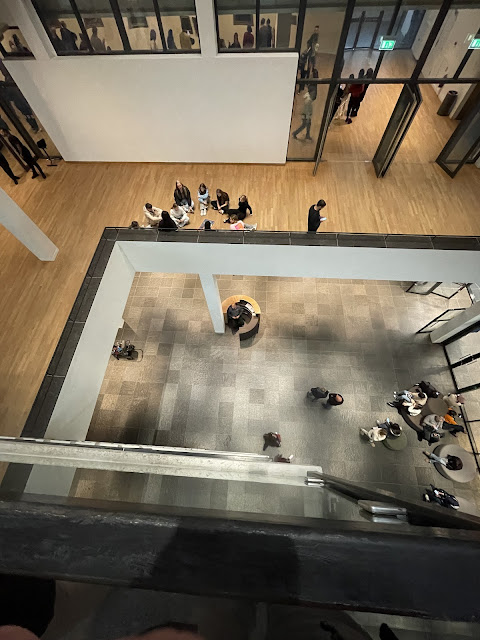I received an addition to my knife collection this Christmas. Becky and Jack, my sister and brother-in-law, gave me a Rapala fillet knife. I like knives. They're simple and handy. When I was a blue collar worker I always carried a hefty knife. When I went white collar I had to leave the knife at home. But then I read a story about a man who rescued a couple from their burning car by cutting their seatbelts. The hero said he grew up on a farm and always carried a knife.
I realized that without a knife, I would have had to stand by helplessly while the people in the car burned to death, so I made sure there was always a sharp knife in the glovebox. I haven't had to rescue anyone since then (c.1997), but the knife comes in handy for cutting up apples when on the road.
The knife Jack chose for me caused some bemusement among the crowd gathered around the Christmas tree as I looked over my new Rapala 4" Fish 'n Fillet knife. I have caught a handful of fish in my time but no one would call me an avid fisherman. Jack said, "He can use it in the kitchen. Put it in the knife drawer. As I say, I like knives and now that I'm retired I could wear it on my belt for any emergencies that pop up.
I encountered some problems with my new knife which I left under our Christmas tree for a couple of weeks. The knife and sheath came in a thick plastic case which requires heavy shears to get through, with the risk of cutting into the product within. Second, there's no room in our knife drawer for more knives. This gave Teresa a chance to bring several knives we never use to the Food Shelf's "free stuff" table in Roseau. And third, in small print the packaging says, "Use only for filleting fish and for no other purpose." It says the same in Spanish. The French version does not say use only for filleting. Rapala has probably learned that if you tell a French person to do something, they'll do the opposite.
The knife comes with a little sharpener. It's one of those V shaped jobs that you draw the knife through. I'm not trying to be difficult but the instructions say, "Insert the knife at a 90° angle to the sharpener," which makes no sense at all. Same instructions in Spanish and French. What language were these instructions translated from? Now another more existential question arose. Where was this knife made? I'm so used to seeing everything made in China that I was heartened to see the blade and sheath both said Finland. But the packaging said made in Estonia.
I searched Rapala Fillet Knife online and found a 20 minute YouTube video about the factory where the knives are made. I hoped to get some tips on sharpening. The video was from Made for the Outdoors hosted by a good old Minnesotan who goes behind the scenes to show how outdoor equipment is made. The knife factory is in Rovaniemi, Finland just south of the Arctic Circle. The business was started by a J. Marttiini in 1928. He made and sold knives and ran the business from his bike. He sounds like the guy who started IKEA next door in Sweden.
He eventually got a truck and started exporting his knives. According to the Minnesota video host, two guys from Minnesota asked Marttiini to make a fillet knife with a flexible blade. The knife was a big hit. The little factory near the Arctic Circle with fewer than 50 employees has sent millions of fillet knives all over the world. In the video we see the blade grinding process, the birch handle making process, the attaching the handle to the blade process. There are plenty of machines in the factory but a lot of the work is done by hand. The factory's only robot has the job of putting the 22 degree angle on the blade. Apparently the stress of getting this right drove too many employees to drink.
So what's with the "Made in Estonia" thing on the packaging. I googled Rapala moves fillet knife production to Estonia, hoping I'd get no hits. But I did find a story saying that in 2022 Rapala moved production to Estonia. The article did not give a reason for the move. The union shop steward at the factory said the employees were very disappointed with the outcome of the negations. Finland and Estonia have similar languages and cultures. Both peoples love the outdoors. Both have endured domination by Russia. The big difference is that Estonia has a more attractive corporate tax climate. Rapala, another Finnish outdoors company had acquired the Marttiini brand in 2005. Finland has an income tax rate near 50%. Estonia's is around 20%, yet Finns are among the two or three happiest peoples in the world. Well, maybe not the former knife factory workers.
 |
| Warranty voided if used to cut seat belts. |








